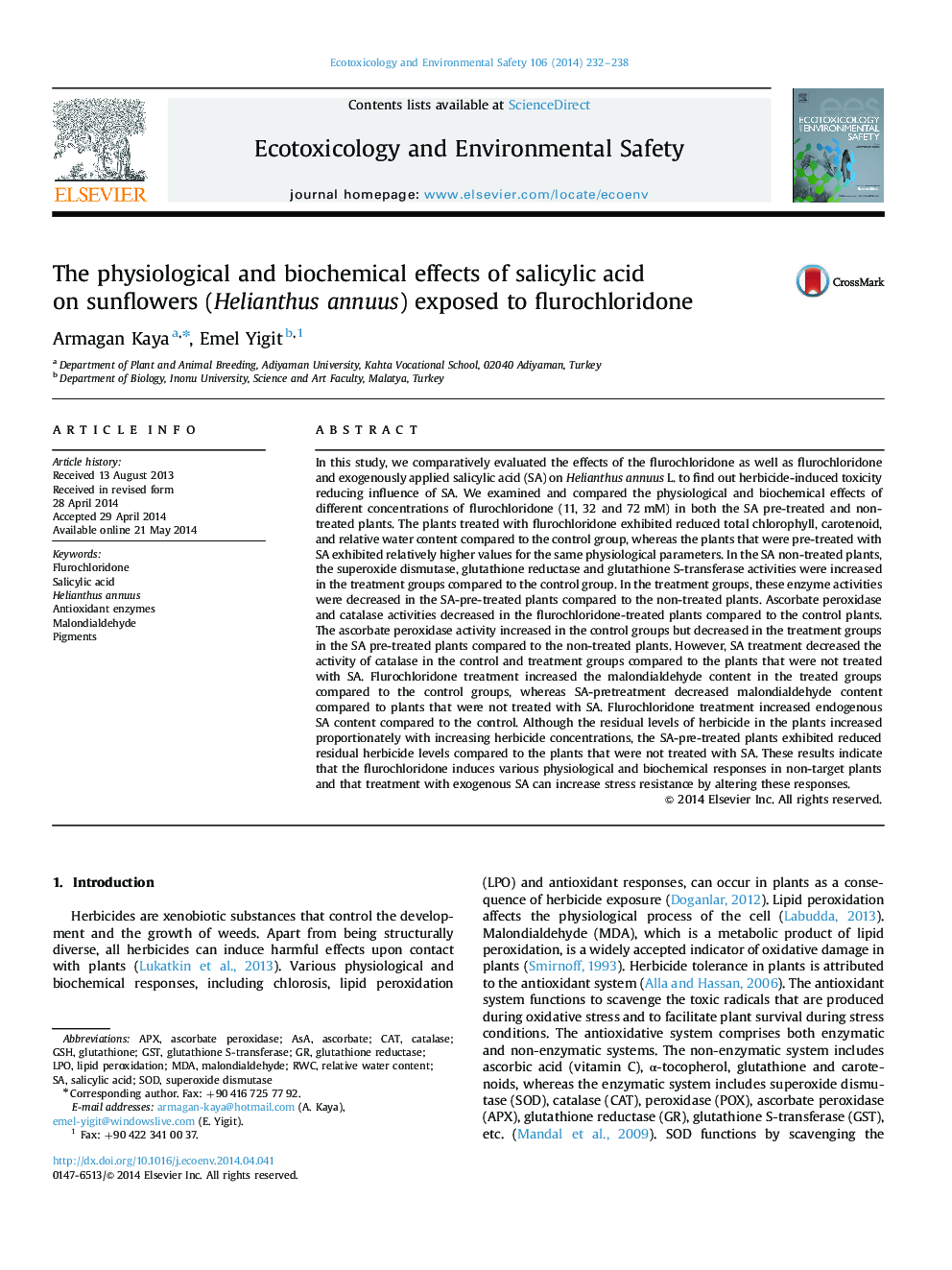| کد مقاله | کد نشریه | سال انتشار | مقاله انگلیسی | نسخه تمام متن |
|---|---|---|---|---|
| 4420027 | 1618957 | 2014 | 7 صفحه PDF | دانلود رایگان |

• Flurochloridone induced various defense responses in sunflowers.
• The amount of herbicide residue increased with increasing herbicide concentrations.
• SA treatment decreased the amount of herbicide residue.
• Exogenous SA increased the herbicide resistance.
In this study, we comparatively evaluated the effects of the flurochloridone as well as flurochloridone and exogenously applied salicylic acid (SA) on Helianthus annuus L. to find out herbicide-induced toxicity reducing influence of SA. We examined and compared the physiological and biochemical effects of different concentrations of flurochloridone (11, 32 and 72 mM) in both the SA pre-treated and non-treated plants. The plants treated with flurochloridone exhibited reduced total chlorophyll, carotenoid, and relative water content compared to the control group, whereas the plants that were pre-treated with SA exhibited relatively higher values for the same physiological parameters. In the SA non-treated plants, the superoxide dismutase, glutathione reductase and glutathione S-transferase activities were increased in the treatment groups compared to the control group. In the treatment groups, these enzyme activities were decreased in the SA-pre-treated plants compared to the non-treated plants. Ascorbate peroxidase and catalase activities decreased in the flurochloridone-treated plants compared to the control plants. The ascorbate peroxidase activity increased in the control groups but decreased in the treatment groups in the SA pre-treated plants compared to the non-treated plants. However, SA treatment decreased the activity of catalase in the control and treatment groups compared to the plants that were not treated with SA. Flurochloridone treatment increased the malondialdehyde content in the treated groups compared to the control groups, whereas SA-pretreatment decreased malondialdehyde content compared to plants that were not treated with SA. Flurochloridone treatment increased endogenous SA content compared to the control. Although the residual levels of herbicide in the plants increased proportionately with increasing herbicide concentrations, the SA-pre-treated plants exhibited reduced residual herbicide levels compared to the plants that were not treated with SA. These results indicate that the flurochloridone induces various physiological and biochemical responses in non-target plants and that treatment with exogenous SA can increase stress resistance by altering these responses.
Figure optionsDownload as PowerPoint slide
Journal: Ecotoxicology and Environmental Safety - Volume 106, August 2014, Pages 232–238